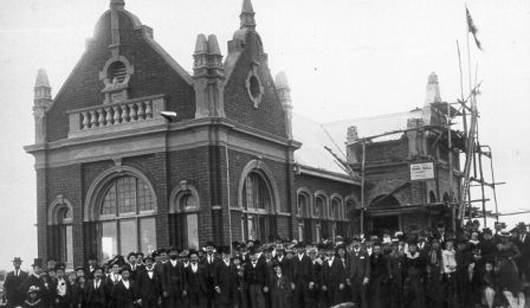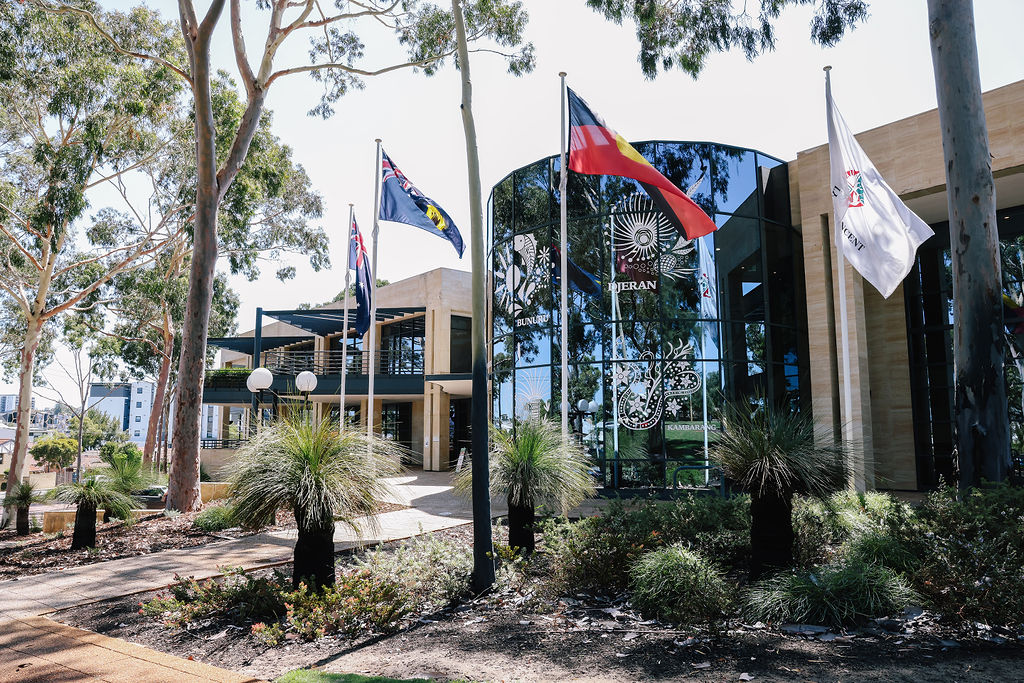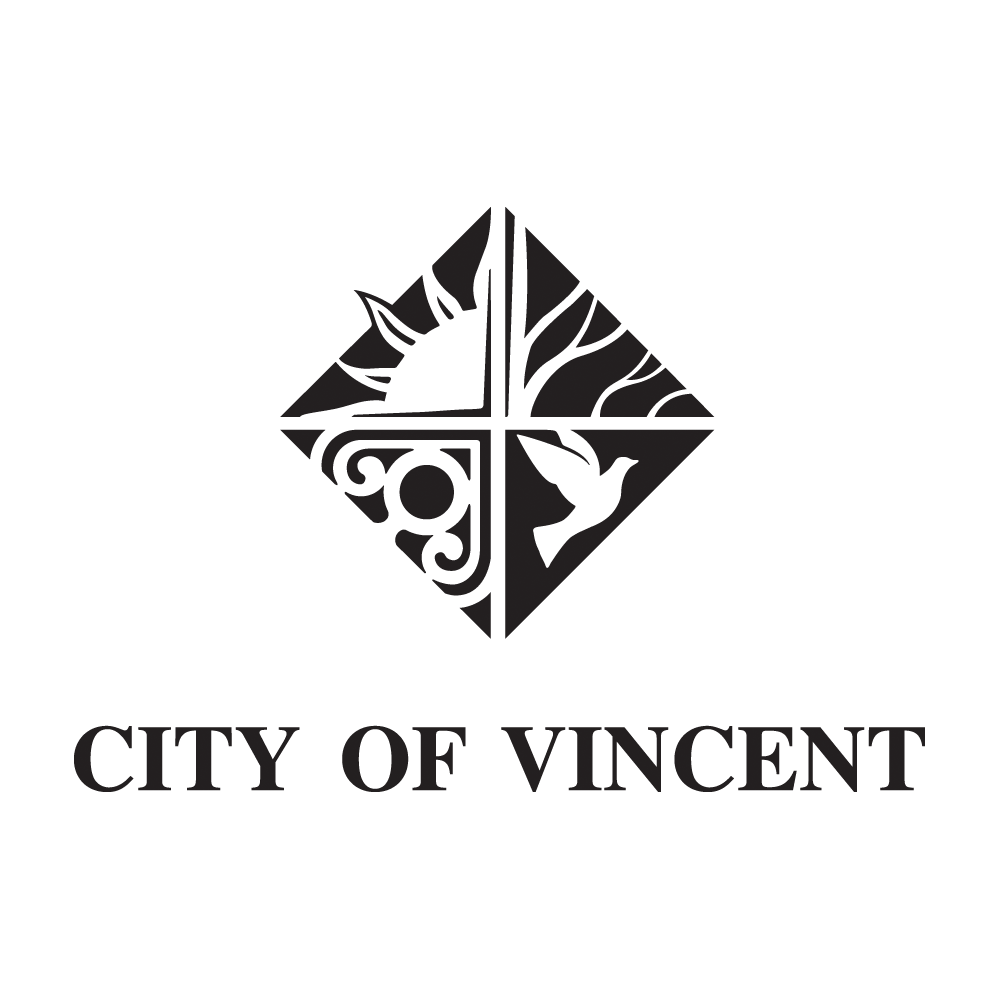History
City of Vincent
For tens of thousands of years before the settlement of the Swan River Colony, Noongar people occupied the south-west corner of Western Australia. Whadjuk Noongar people lived in the Perth region and moved between lakes, the coastal plain and the hills following the Noongar six season calendar. The lands and waters of this area not only provided Aboriginal people with physical sustenance but a deep connection to their spiritual way of life.
After settlement in 1829, the Europeans gave the name of 'Third Swamp' to one of a chain of lakes stretching from Claisebrook to Herdsman Lake. Nearly seventy years later, in 1897, 15 hectares of Third Swamp would be gazetted as a public park and two years later renamed Hyde Park. Hyde Park is now one of Vincent's most attractive and popular parks and is registered as an Aboriginal site of significance by the Department of Planning, Lands and Heritage.
From 1831, hostile encounters between European settlers and Noongar people - both large-scale land users with conflicting land value systems - increased considerably. This phase of violence culminated in the execution of Whadjuk Elders as well as the massacres of numerous Noongar families.
By 1843, when prominent leader Yellagonga died, his people had been dispossessed of their land around the main settlement area of the Swan River Colony. They retreated to the swamps and lakes north of the settlement area including Third Swamp, known to Noongar people as Boodjamooling.
Boodjamooling continued to be a main campsite for the remaining Noongar people in the Perth region and was also used by travellers, itinerants and homeless people seeking a place to live. By the gold-rush days in the 1890s they were joined by many miners en route to the goldfields.
Meanwhile the principal lakes had been drained and between 1855 and 1883 there were phases of settlement to the north of Perth. The 1871 Municipalities Act established Perth and seven other towns as municipalities with the authority to levy rates, while Local Road Districts were financed almost exclusively from government grants.
Leederville, Highgate and North Perth were originally included in the vast area controlled by the Perth Road Board District, whose limited revenue over the next twenty years was reflected most obviously in the lack of road construction. Much early infrastructure was financed by private citizens.
Residential development progressed from the 1880s, particularly following the completion of the Fremantle to Guildford rail line in 1881. Highgate began to develop, the Woodville Estate (now North Perth) was opened in 1890, and the Monger and Leeder Estates were sold to developers and subdivided in 1890-1891. The first subdivision of the Mt Hawthorn locations into residential estates occurred between 1887 and 1903, with the Hawthorne Estate being one of the later subdivisions.
Development was rapid in Leederville and North Perth. In May 1895, the section of the Perth Roads Board area covering Leederville and West Leederville was gazetted Leederville Roads Board. Less than 12 months later, Leederville became a municipality, having sufficient property within its boundaries to provide a minimum of £300 in annual rates at a rating of not more than one shilling to the pound. In April 1897, the population of the Leederville municipality had reached more than one thousand and its municipal area was divided into three Wards - North, South and Central.
By 1897, Third Swamp was no longer a camp site and was vested for the citizens as a public reserve.

Official opening of North Perth Town Hall, 30 June 1902.
Much of Vincent's rich heritage stems from the 1890s and 1900s when many community buildings were established, including the North Perth district school (now North Perth Primary), Highgate Primary School, Leederville and Brisbane Street post offices, North Perth police station, Brisbane and Queens hotels, the North Perth Town Hall, the Redemptorist Monastery and the Perth Mosque.
By 1895 North Perth had also emerged as a suburb in its own right. Four years later, it was declared a Roads Board and in October 1901, gazetted as a municipality. The North Perth Council was in existence from 25 October 1901 to 22 December 1914.
In 1914, the Councils of Perth, North Perth and Leederville agreed to the union of the three municipalities, as prescribed in the Municipal Corporation's Act 1906. The union took effect on 22 December 1914. Later, the ratepayers of Victoria Park Council decided by referendum on 22 November 1916 to amalgamate with the City of Perth, and this union was consummated on 1 November 1917.
On 1 July 1994, the restructure of the City of Perth created three new local governments: the Towns of Vincent, Cambridge and Shepparton (now Victoria Park), plus a smaller City of Perth. Commissioners were appointed to control these until elections were held in May 1995.
Having met the requirements to be designated a City, as prescribed by Section 2.4 of the Local Government Act 1995, on 1 July 2011 the Town of Vincent became the City of Vincent.
The City of Vincent is named after Vincent Street, which is a major road through the centre of the City. It is also the location of the City's Council Chambers and administrative offices.
Vincent Street is believed to be named after George Vincent, the Chief Draftsman in the Lands Department and original grantee of land on the north side, east from Charles Street. He named it after himself on issue of the first Crown Grant of Perth c.1876. The municipality includes the suburbs of North Perth, Leederville, Highgate, Mt Hawthorn, and parts of East Perth, West Perth, Perth City, Mt Lawley and Coolbinia.
Although only new, within its boundaries Vincent holds a rich and varied history. It is a place of cultural diversity with residents whose origins lie in places like Europe and Asia, and 45 per cent of whom were born overseas. Reflections of this variety are found in the number of religions or spiritual groups that have representation within Vincent, among them 18 Christian denominations, and Hinduism, Islam and Judaism.
There are busy and popular commercial areas such as Beaufort, Fitzgerald, Oxford Streets and Scarborough Beach Road, and peaceful suburbs where old and new lie side by side. There is more than a hundred years of built history and heritage within the boundaries of the municipality - and all of it, whether a century, a decade, or just a few years old, is important to the City of Vincent. All of it contributes to the colour and personality of Vincent, enriching the lives of the people who live here and of those just passing through.
Explore the history of Vincent by visiting the Local History Centre
Administration & Civic Centre
The Administration and Civic Centre, on the corner of Loftus and Vincent Streets in Leederville, was designed by Peter Hunt Architect Pty Ltd and built by Consolidated Constructions Pty Ltd at a cost of $5.65 million.
Design of the building commenced in November 1994 and tenders for the construction were awarded at the Council meeting held on 7 March 1995. Construction commenced on 4 April 1995 and was completed on 22 March 1996, within budget and within the specified contract time.
Prior to its completion, the City's offices were temporarily (February 1995 to March 1996) located in a grandstand at Leederville Oval.
The artwork on the windows has been designed by Darryl Bellotti.

Administration and Civic Centre comprises three levels: the basement level, which accommodates storerooms and parking for 30 vehicles; the ground floor comprising offices, walkways and balconies; and the first floor comprising the Council Chamber, function area, kitchen, Mayor's suite, Councillors' room, Chief Executive's Office, staff recreational room and training room.
The Administration and Civic Centre is clad in Western Australian Donnybrook Stone and incorporates Australian - and in particular Western Australian - products throughout.
The City received a certificate of commendation in 1996 from the Royal Australian Institute of Architects and won the Public Building category $3 million to $6 million range at the Master Builders and Construction Contractors Association Awards. Awards were also won for electrical and lighting and the external cladding.
Our logo
In late 1995 a public competition was conducted to design and create the City's corporate logo. Joint winners of the competition were Renato Perino and Paul Glasson. The logo was adopted by the Council on 12 February 1996.

The City of Vincent's logo combines elements that characterise the diversity of the area:
|
Sun - symbolising warmth and energy, reflecting the pleasant lifestyle in this area.
|
|
Tree branch - symbolising the lush, well-kept parks and gardens and a strong commitment to a clean, healthy and safe environment which are aspects of the City of Vincent's outdoors.
|
|
Bird - symbolising peace, harmony and friendliness which prevails within the City.
|
|
Cornice - symbolising the architectural and historic aspect of the area, and featuring on many character houses and buildings, some of which were built in the late 1890s and early 1900s.
|
The diamond shape
Symbolising strength and prosperity.
Trademarks
The constructions "Town of Vincent" and "Beatty Park Leisure Centre", together with their respective logos, are registered trademarks. All uses must be authorised by the City of Vincent.